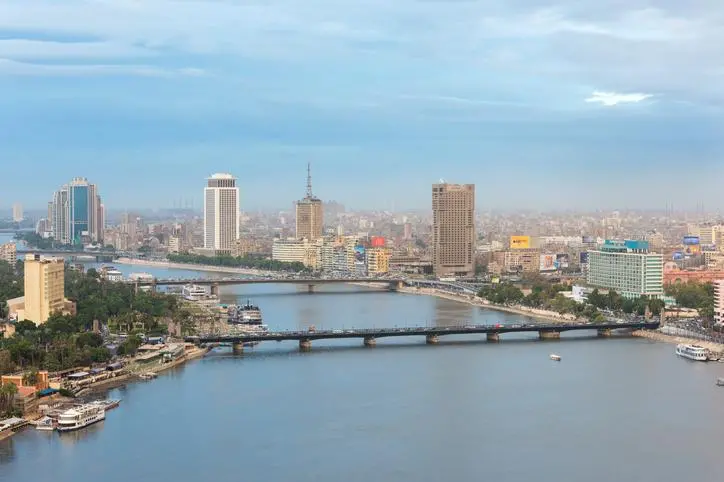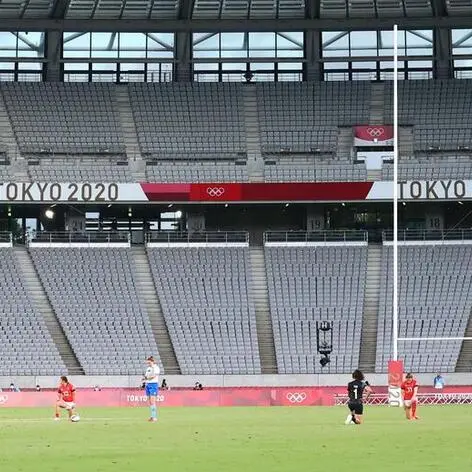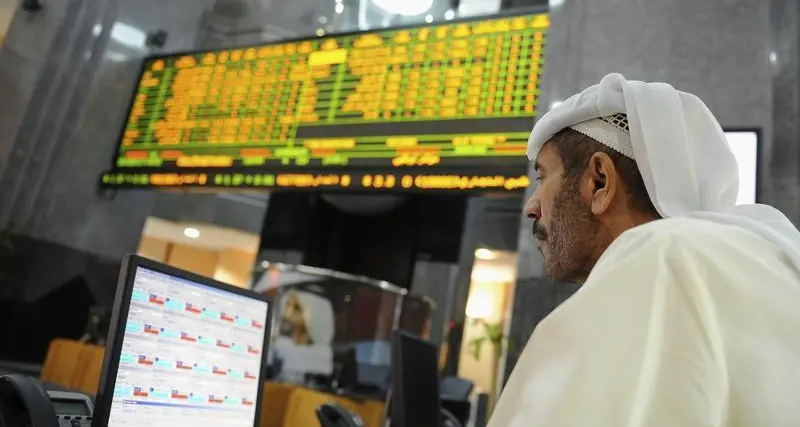PHOTO
Throughout the COVID-19 pandemic, the healthcare sector emerged as a hero to help deal with the gravity of the situation. From diagnosing and treating patients to strategizing on antiviral and vaccine deployment, Egypt’s healthcare sector in tandem with the Ministry of Health has cast light on what would have otherwise been a very dark and bleak reality. In addition to the doctors and nurses, special credit must also be given to the pharmaceutical industry and medical device manufacturers that have equally contributed to help in managing the outbreak.
One organization that stands out is AMECO, the Middle East's largest and oldest disposable syringe manufacturer.
Arab Finance sat down with Omar El Fata, the CEO of AMECO, to discuss the disposable syringe market not only with respect to delivering COVID vaccines and medication, but also the company's role in innovating safer, more hygienic products to the market to help eliminate all kinds of pandemics.
Can you please start by giving us some background on AMECO?
AMECO was founded in 1984 in Tenth of Ramadan City as a turnkey project from Germany to produce plastic disposable syringes in the region. When the company was first founded, the market was mainly dominated by glass syringes, but there was a shift internationally toward the use of plastic syringes. We introduced this to the African and Middle Eastern markets, and we were actually the first company to be registered by the Ministry of Health for medical devices. Our registration number is literally number one with the Ministry of Health. We are a supplier to the public sector and to the private sector, and we produce all types of syringes, from 1mL syringes, 3mL, 5mL, 10mL, 20 and 50 mL syringes, in addition to oral syringes for feeding, and of course diabetic Insulin syringes. We also produce our own hypodermic needles, to ensure the full syringe is produced in-house.
We are also rolling out RETRAGO safety syringes in partnership with an Italian company, where we are the exclusive industrial partner for this technology worldwide. RETRAGO is an innovative reinvention of the syringe, implementing safety mechanisms promoting infection prevention and control. After a single injection, the RETRAGO syringe automatically retracts the exposed needle and prevents the re-use of the syringe. RETRAGO is the first automatically retractable syringe that features Auto Disable (AD), Re-Use Prevention (RUP), and Sharp Injury Protection (SIP) safety mechanisms in one device. The combination of these safety features not only protects patients, but also healthcare workers, waste management workers and the community from the risk of accidental needlestick injuries (NSI) and syringe re-use, potentially saving millions of lives.
Egypt is a prime example of outbreaks resulting from unsafe injections, since we have the highest prevalence of Hepatitis C in the world.
RETRAGO was awarded by UNAIDS as one of the TOP 20 Global Health Innovations with the potential to deliver impact for countries reaching the Sustainable Development Goals (SDGs) and was launched during the 72nd World Health Assembly 2019 from 21st to 23rd May 2019 at the UN Palais des Nations (Geneva, Switzerland) in the presence of 100 Ministers of Health. This recognition, as well as the continued support of the Health Innovation Exchange team, has dramatically reduced the time to commercialize our innovation.
Can you provide us with some background on the plastic syringe industry? As one of the largest manufacturers of disposable syringes has it been difficult to keep up with demand during the COVID-19 pandemic?
Yes, of course. Demand has increased dramatically because of the vaccination campaign. The syringe market is measured by the number of injections per person per year, and this depends on the demographics of the country, whether it is a developing country or developed, etc. But in general, the overall global syringe market stands at approximately 50 billion pieces per year. In Egypt, it is about two to three billion pieces per year. In US dollar terms, the global market is about $5–$6 billion per year. Of course, the rollout of the vaccination campaign requires an additional 10+ billion syringes and needles, in addition to the normal supply. So we are talking about a 20%–25% increase, and this is very critical, because of course for every vaccine you need a syringe, and the scale up of syringes can take much more time than the scale up of vaccines.
The most difficult phase in vaccine rollout is the development, regulatory approvals and technology transfers. Furthermore, the use of new technologies such as mRNA poses additional challenges since there is no large manufacturing or raw material capacity at the outset of the pandemic. However, there are many common industrial equipment involved from other drugs or vaccines, and lines or entire facilities can be readily converted to produce COVID-19 vaccines. Pharmaceutical companies also license their formulas to other regional/local pharmaceutical companies, allowing for a faster global scale up, as we are seeing today in Egypt, for example, where we are locally producing the Sinovac and the Sputnik COVID-19 vaccines. We should start seeing high local production of these, if not even the ability to export them as well.
When we talk about syringes, the situation is quite different. Syringe components have tolerances of under 50µ, which is almost the same thickness as a human hair! Syringe production is a high-volume industry, which depends on high cavitation tools and automation lines to yield high productivity. Syringes production involves a lot of “heavy” equipment such as injection moulding machines that require a much longer time to commission and feature a large physical footprint. It is for these reasons that it can take probably 12–16 months before you can start seeing any increase in production after making the necessary down payments for the equipment. This of course can take much longer if a syringe factory is being erected from scratch (greenfield) with no CE/FDA certification, which can take a minimum of an additional 12 months to construct and audit the facility. Timelines can be further extended due to the ongoing global supply chain challenges and component shortages.
Also, a fundamental difference between vaccine and syringe scale up is the finance. Vaccine production has been financed by governments, whereas this has not been the case with syringes.
States have financed the research and production of vaccines in addition to buying and even prepaying for their allocation. This is an important point to look out for because this means that the private sector needs to make these investments to scale syringe production without any purchase commitments from the government side, with the exception to this being the USA which financed local syringe manufacturers to increase their production lines with commitments of over $1 billion. As for the rest of the world, even when we talk about the EU, for example, no one has given this any consideration.
It is for these reasons that I predict that syringe shortages will be commonplace, if not severe. This could result in a syringe crisis, complementary to the ongoing vaccination crisis.
Also, it is important to note that the syringes we are talking about that are specifically used for vaccination are not actually produced by most syringe manufacturers. For example, you need a 0.3 or 0.5 mL syringe specific to vaccinations, and the far majority of syringe manufactures do not produce them and instead produce general syringes (ie 1/3/5/10mL).
Syringes with a special feature referred to as “zero dead space” are even more difficult to find. With each injection using a typical syringe, you have a little waste of the drug/vaccine in the “dead space” between the syringe tip and needle. That volume is wasted and does not actually flow into your body during an injection. So, you have special types of syringes that can squeeze out even that last bit, effectively eliminating any waste. This is very important because if you consider a Pfizer vaccine vial, for example, you can extract six doses instead of five when you use a zero dead space syringe compared to a normal syringe. That’s almost 20% more, meaning vaccinating more people; every drop counts!
At AMECO we produce zero dead space syringes as well as insulin syringes, which are not conventionally used for vaccination, but they are being used today because they employ the same concept of not wasting any of the medication. For those who take insulin regularly, it can be expensive and also dangerous if you waste or do not get your full dose of insulin. It is for this reason that by design, insulin syringes have the same feature of zero dead space syringes. AMECO produces zero dead space and insulin syringes, which can be used for vaccination, but again these are not generally produced by most manufacturers.
At the moment, we are not feeling the effects of syringe shortages because the developing world still has relatively low inoculation rates. The developed world already has already vaccinated at least one dose to over 50% of their population, sometimes more in cases like Israel, for example. But when we talk about the developing world, we are still at lower rates of about 5% and under, and this is the majority of the world. As the vaccination campaign rolls out through developing countries, we are going to start seeing these shortages, especially also when you consider that we are now talking about booster shots and the possibility of regular annual vaccinations, in addition to the typical two or three doses needed today. As we progress into this pandemic, these shortages are going to be more and more evident.
Can you talk to us more about the role of innovation in the syringe industry?
In the syringe industry, the main innovation right now is related to incorporating safety features into the syringe design. Each year there are millions of deaths and health expenditures lost due to the infections arising from syringe re-use and accidental Needle Stick Injuries (NSIs). The World Health Organization (WHO) has been actively working alongside the Ministries of Health of member states to help find a proactive solution for the spread of blood-borne diseases such as HIV or Hepatitis C through unsafe medical devices. The re-use of syringes has been identified as the primary reason behind these infections. As a result, syringe manufacturers have been asked to design a syringe that has safety mechanisms preventing needle stick injuries and syringe re-use, which are commonly referred to as “safety syringes.” In 2015, the WHO started its Injection Safety Campaign calling for worldwide and exclusive use of safety syringes by 2020.
Historically the market shifted from the glass syringe, which was very unhygienic, painful, and difficult to mass produce, to the plastic syringe, which is hygienic, much less painful, and is highly scalable. The next generational shift is toward safety syringes, which are syringes that can be used only one time.
This is similar to the evolution of cars, for example, which initially had no seatbelts but as safety standards emerged, began to include seatbelts, airbags, etc.
You need a design that considers four main features to make feasible safety syringe, because there are many designs in the market, and most have failed to provide any real safety to patients and nurses.
The first feature is the safety design and mechanism itself. There are two main features, RUP (Re-Use Prevention) and SIP (Sharps-Injury Prevention). The safety syringe must protect from both the needle-stick injuries as well as prevent the reuse of the syringe itself. Most safety syringes have one of these features, and rarely both.
The second feature is related to the trigger or activation of the safety mechanism (Active or Passive designs). Most safety syringe designs are manually activated, which means that after using the syringe, the nurse has to manually activate the safety mechanism, such as for example manually recapping a needle shield. “Active” devices require one- or two-handed activation by the health care worker after use and on the other hand “passive devices” that are automatically operated throughout the use of the device. We have learned as an industry that passive designs are far more effective than active designs since they reduce errors and any possibility to bypass the safety mechanism.
The third feature is related to training. It is all good and well if you have a syringe that is very safe, but if you need to re-train the nurse to use it, the safety syringe must work like a conventional syringe. If for example a car manufacturer were to release an extremely safe car guaranteed to keep passengers safe and prevent any injuries, but required retraining drivers, it would be very difficult - if not impossible- to sell.
The last point, of course, given all of this is the scalability of this design. When we talk about syringes, we are talking about hundreds of millions of pieces per year. AMECO, for example, has a capacity of over 500 million syringes and needles per year. The design, since you are incorporating a safety mechanism, which means that you are adding to the design, needs to be scalable and producible at these high levels, and this has always been the challenge with safety syringes, the balance between the safety features and how fast you can mass produce them.
With RETRAGO what we have accomplished is really exceptional since the syringe looks and works just like a normal syringe. RETRAGO features both SIP and RUP safety features in the same device. It is an automatic syringe, there is no intervention needed by the nurse to activate it, and it can be produced at faster rates than conventional syringes.
If you consider hepatitis C, taking Egypt as an example, the country has the highest prevalence of the disease in the world. It is a very dangerous virus because if you get infected and you do not get checked, you may not feel symptoms for years after infection. During that time, if you do not know you have the virus, imagine how many people you are potentially spreading it to.
The “100 Million Seha” campaign, which kicked off at a national scale in October 2018 under the auspices of President Abdel Fattah El-Sisi, aims at detecting and eliminating Hepatitis C in Egypt by 2023. The campaign has started providing free tests to all foreign nationals in Egypt including refugees and asylum-seekers as of 17 March 2019, with the first refugee receiving free Hepatitis C medication a week later. Screening will include testing for HCV antibodies, and assessment for hypertension, diabetes, and obesity. To achieve this goal, all healthcare facilities in Egypt will participate, including 3,800 rural health units, all Ministry of Health district and central hospitals, health insurance organization facilities, university hospitals, and military health facilities. In all, more than 5,000 test sites will participate in the screening program. A screening and treatment program of this magnitude has not been attempted before and will be a large step towards disease elimination in Egypt.
While the “100 Million Seha” campaign was a great success in the screening and treatment those diagnosed for free, the missing piece of all of this is the safety syringe. Treatment using pharmaceutical drugs does not prevent new cases. Drugs are a reactive measure after an individual has contracted the disease. The exclusive use of effective safety syringes is a proactive measure and will prevent new cases of Hepatis C from developing, while treating existing cases in parallel.
It is for this reason that Egypt was one of the first countries in Africa to decide to convert the market from standard syringes to safety syringes starting June last year, a step in the right direction.
Do you experience obstacles in production or in sales, whether locally or regionally? Are the recurring themes or trends that are preventing you from being more efficient or better deploying your products?
Of course. One of the biggest problems right now is the global shipping situation. We work in a very globalized supply chain. We import approximately 90% of our raw materials, which must be medical grade to international standards. The price of polypropylene – a key material in syringe production – increased dramatically, almost doubling during the pandemic, which is unheard of in this market. The availability and prices of container ships has become astronomical today. Air freight is out of the question because air freight depends mainly on passenger jets to deliver the cargo. Today, there's a substantial reduction of airline flights, so shipping has become much more expensive and much more unreliable in terms of scheduling.
Pharmaceutical companies producing vaccines also are facing serious distributions. Vaccine production not only requires highly skilled workers which are hard to find, but involve more than 100 components. These components are sourced from many different countries and are time-sensitive which can halt an entire production line – risking wasting a vaccine batch – if not readily available.
Other difficulties include shortages of sterile plastic bags, single-use assemblies (ie plastic pipes, filters) in addition to essential materials for developing cell cultures. The Coalition for Epidemic Preparedness Innovations (CEPI) has launched the COVAX Marketplace, which is a secure platform to help vaccine producers source production materials from unused/surplus stock from manufacturers with non-vaccine activities.
Exports are similarly not guaranteed, again for the same reasons. Depending on the situation, raw material and finished products can be blocked from export. At the moment, this is not the case for syringes, but it is the case with masks, for example. During the initial part of the pandemic, there was a mask shortage and their prices soared and hence why it is vey important to control these critical supplies.
The global supply chain is very sensitive, and the pandemic has led to serious distributions due to lockdowns, container, and cargo ship shortages, and of course export curbs for critical food/medical supplies prioritized to the country-of-origin needs.
Can you provide an outlook on the market four to five years from now? What would the market look like with COVID behind us?
In my opinion, I think we will continue to deal with COVID for at least another three years. We are becoming fatigued as people, but you know, the virus does not get fatigued and has mutated and it is spreading at ever increasing rates. So I believe the healthcare sector will get a lot more attention moving forward. Recently, with the introduction of Egypt's Universal Healthcare Coverage (UHC), there was considerable interest in hospitals and healthcare service providers, and we saw a lot of healthcare sector mergers and acquisitions, very successful ones at that. I think the next phase will be on the manufacturing side, and securing of strategic and essential medical goods locally. A lesson that a lot of countries are learning today is that our highly global globalized supply chain is reliable only during stable times. When you have severe disruptions like with the ongoing pandemic, it is very important for countries to be self-sufficient with their strategic – everything – strategic foods, strategic medical devices, drugs, vaccines, all these things. Egypt is well positioned because we have reputable national vaccine manufacturers such as Vacsera. We have a very good foundation for the medical device and pharmaceutical manufacturing industry. Egypt is one of the first industrialized countries in Africa, if not the first. We have a stable banking system, low country risk, competitive cost of labour, so I think moving forward in the next five years, we will see a lot of a lot of investment in the local manufacturing all critical supplies.
Copyright © 2021 Arab Finance Brokerage Company All rights reserved. Provided by SyndiGate Media Inc. (Syndigate.info).












